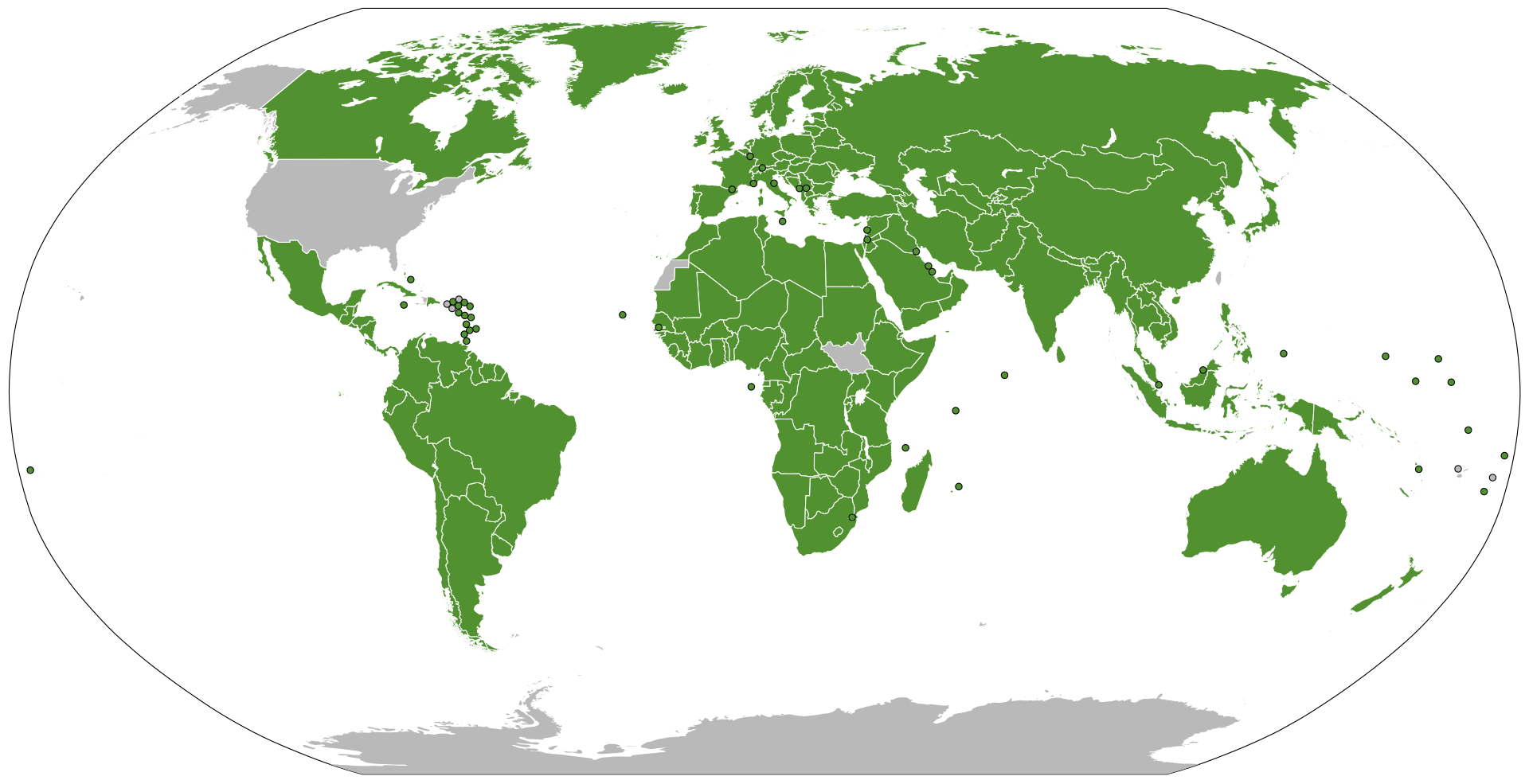Map of Parties Signed to the Basel Convention


Marcus Rodriguez
Historical Geography Expert
Marcus Rodriguez specializes in historical cartography and geographic data analysis. With a background in both history and geography, he brings unique...
Geographic Analysis
What This Map Shows
This map presents a comprehensive overview of the countries that are parties to the Basel Convention, an influential international treaty aimed at minimizing the transboundary movement of hazardous waste. By visualizing the signatory nations, we can better understand the global commitment to managing hazardous waste responsibly and protecting both human health and the environment. The Basel Convention, adopted in 1989, serves as a critical framework in regulating the international trade of hazardous waste, ensuring that it is handled and disposed of in an environmentally sound manner.
Deep Dive into the Basel Convention and Hazardous Waste Management
Have you ever wondered why hazardous waste is a pressing global issue? Hazardous waste includes substances that can pose substantial risks to human health and the environment if improperly managed. This can range from industrial chemicals to medical waste, and even electronic waste. With globalization, the movement of such waste across borders has increased, leading to significant concerns about environmental injustice and public health in less developed countries.
The Basel Convention plays a crucial role in addressing these challenges. It establishes a framework that obliges signatory nations to ensure that their hazardous waste is managed in an environmentally sound manner. One of the key principles of the Convention is the prior informed consent mechanism, which requires exporting countries to obtain consent from importing nations before shipping hazardous waste.
Interestingly, the treaty has evolved over the years to address emerging concerns, such as the growing problem of e-waste. In fact, the 1995 Amendment to the Convention prohibited the export of hazardous waste from developed to developing countries, underscoring a strong commitment to ethical waste management practices. As of now, there are over 180 parties to the Basel Convention, a testament to the global acknowledgment of this pressing issue.
The significance of this treaty cannot be overstated. According to the United Nations, around 50 million tons of e-waste are generated globally each year, and a substantial portion of this ends up in countries ill-equipped to handle it safely. The Basel Convention aims to mitigate this by regulating and reducing the hazardous waste trade.
Regional Analysis
Looking at the map, we can see that Europe and North America have relatively high participation rates in the Basel Convention, with nearly all countries in these regions being parties. This is largely due to stringent environmental regulations and a strong commitment to sustainable practices. For instance, the European Union has implemented various directives that align with the Basel Convention, promoting recycling and responsible waste management.
In contrast, regions such as Africa and parts of Asia show varied levels of participation. Countries like South Africa and Kenya are signatories and have made strides in implementing waste management policies. However, challenges remain in many other African nations, where inadequate infrastructure and limited resources hinder effective hazardous waste management.
Interestingly, some countries in Asia, such as India and China, have shown a growing commitment to the Basel Convention. India, for example, has adopted national policies that reflect the principles of the Convention, aiming to improve its hazardous waste management framework. However, disparities still exist, as some countries remain non-signatories, posing a risk to global environmental health due to lax regulations.
Significance and Impact
The impact of the Basel Convention extends beyond simply reducing hazardous waste movements; it plays a vital role in fostering international cooperation and accountability. As global awareness of environmental issues rises, the treaty remains central in discussions surrounding sustainable development and waste management.
Moreover, the recent emphasis on the circular economy has brought new life to conversations about the Basel Convention. Countries are increasingly recognizing that responsible waste management is not just a regulatory issue, but a critical component of sustainable economic development. As we move forward, it’s crucial to strengthen the commitment to the Basel Convention and encourage more nations to sign on, ensuring that hazardous waste is managed responsibly across the globe. The future of our environment may very well depend on it.
What’s fascinating is how this map serves as a visual reminder of the collective effort required to tackle hazardous waste issues. By understanding who the parties are, we can appreciate the solidarity in addressing this global challenge and recognize the importance of continued advocacy for better environmental practices worldwide.
Visualization Details
- Published
- September 16, 2025
- Views
- 74
Comments
Loading comments...